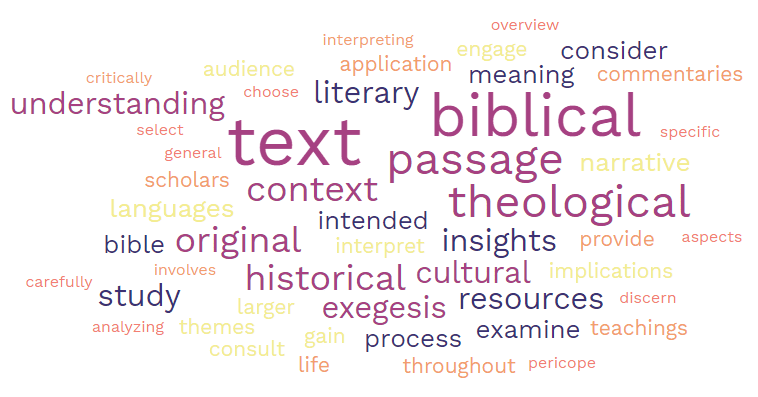
National Association of Christian Ministers Summary Series: Theology
Biblical exegesis is the process of critically interpreting and understanding the meaning of a biblical text. It involves carefully analyzing the historical, cultural, literary, and theological aspects of the text to discern its original intended meaning. Here is a general overview of the process of biblical exegesis:
1. Select a Passage: Choose a specific passage or pericope (a self-contained unit of text) from the Bible that you want to study and interpret. It can be a single verse, a paragraph, or a larger section, depending on your purpose and focus.
2. Historical and Cultural Context: Study the historical and cultural context of the passage. This includes considering the authorship, date, and intended audience of the text. Examine the historical background, social customs, religious practices, and political climate of the time to gain insights into the context in which the text was written.
3. Literary Analysis: Engage in a close reading of the text to analyze its literary features. Consider:
the genre of the passage, whether it is narrative, poetry, prophecy, epistle, etc.
Pay attention to the:
structure,
literary devices,
themes, and
the flow of the narrative or argument.
4. Original Languages: If possible, study the original languages of the Bible (Hebrew, Aramaic, and Greek) to gain a more precise understanding of the text. Examine the meanings of individual words, grammar, syntax, and idiomatic expressions. If you don’t know the original languages, consult reliable translations and lexical resources to explore the nuances of the text.
5. Comparative Study: Compare the passage you’re studying with other relevant passages:
within the same book,
the larger biblical context, and
related theological themes.
This helps to ensure a comprehensive understanding of the text and prevents isolated or distorted interpretations.
6. Theological Considerations: Examine the theological implications and teachings present in the passage. Consider how the text aligns with other biblical teachings and the overall theological framework of the Bible. Be aware of the progressive revelation throughout the biblical narrative and the redemptive work of Christ.
7. Commentaries and Resources: Consult reputable commentaries, biblical dictionaries, lexicons, and theological resources to benefit from the insights and expertise of biblical scholars. These resources provide:
historical,
cultural,
linguistic, and
theological information that can aid in understanding the passage.
8. Interpretation and Application: Based on the insights gained from the previous steps, interpret the meaning of the text in its original context.
Consider the author’s intention,
the intended audience, and the message conveyed.
Identify the timeless truths and principles that can be applied to contemporary life and faith.
9. Reflection and Prayer: Reflect on the implications and relevance of the text for your personal life, the church, and society. Engage in prayerful meditation and seek the guidance of the Holy Spirit to understand the text’s application and transformative power.
It is important to note that biblical exegesis requires humility, a willingness to learn, and a recognition of the limitations of our own biases and presuppositions. Engaging in the fellowship of the NACM, a community of believers, including pastors, scholars, and fellow Christians, can provide valuable insights and accountability throughout the process of biblical exegesis.





